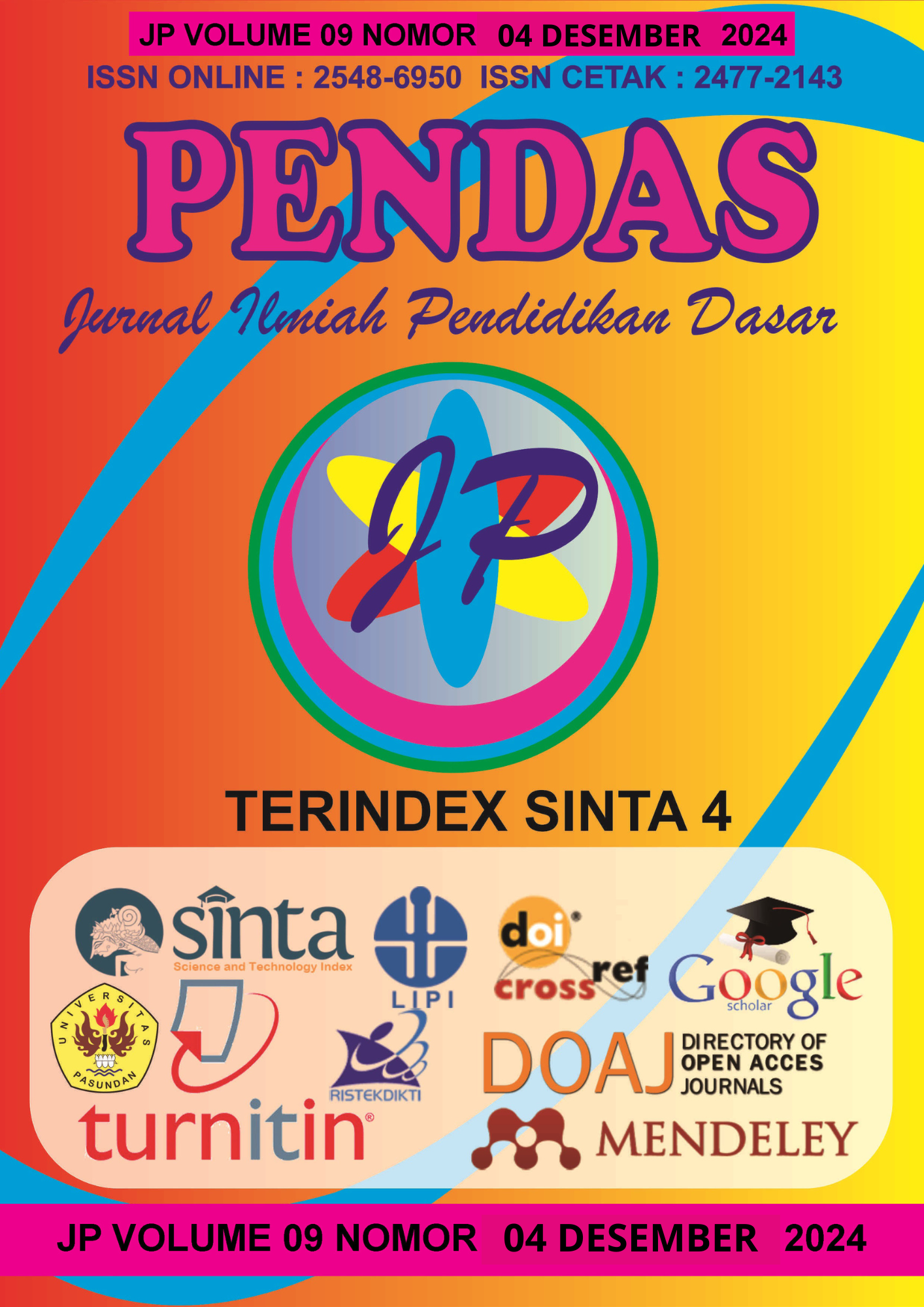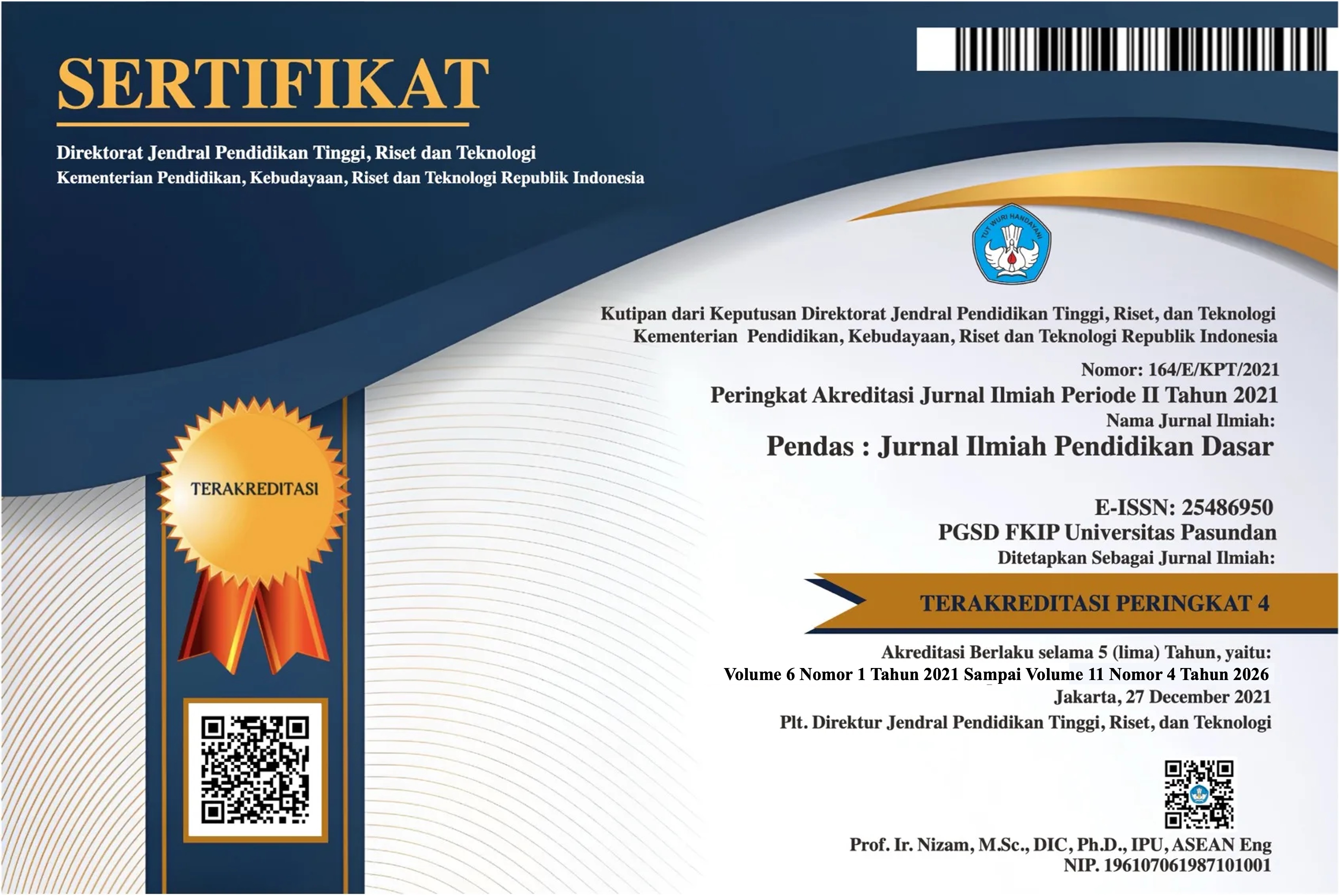HUBUNGAN ANTARA BEBAN KERJA DAN DUKUNGAN SOSIAL DENGAN BURNOUT PADA GURU MUDA
Keywords:
Burnout, Workload, Social Support, young teachersAbstract
The purpose of this study was to empirically determine the relationship between workload and social support with burnout in young teachers. This research is quantitative in nature. This research was conducted from July to December 2024. In this study, teachers who have a maximum work experience of 2 years as a population. The sampling technique used in this study is non probability sampling with purposive sampling method. Data collection in this study used the Maslach Burnout Inventory (MBI) scale which has been adapted in Indonesia, the Multidimensional Scale of Perceived Social Support (MSPSS) scale which has been adapted in Indonesia, and the workload scale. Data analysis in this study used two predictor regression analysis methods and product moment. The results of this study showed a p value of 0.000 (p. <0.01) so that the major hypothesis which says there is a very significant relationship between workload and social support with burnout is accepted with an effective contribution of 64.7%. Thus, the conclusion of this study is that workload and social support have a very significant influence on burnout in young teachers.
Downloads
References
Adinsa, R., & Dewi, M. (2017). Stres kerja pada guru dan dampaknya terhadap burnout. Yogyakarta: Universitas Negeri Yogyakarta.
Alarcon, G. M. (2011). A meta-analysis of burnout with job demands, resources, and attitudes. Journal of Vocational Behavior, 79(2), 549–562. https://doi.org/10.1016/j.jvb.2011.03.007
Azwar, S. (2012). Reliabilitas dan validitas. Yogyakarta: Pustaka Pelajar.
Burke, R. J., & Greenglass, E. R. (1995). A longitudinal study of psychological burnout in teachers. Human Relations, 48(2), 187–202. https://doi.org/10.1177/001872679504800205
Byrne, B. M. (1991). Burnout: Investigating the impact of background variables for elementary, intermediate, secondary, and university educators. Teaching and Teacher Education, 7(2), 197–209. https://doi.org/10.1016/0742-051X(91)90027-M
Cahyani, D. (2019). Dampak stres kerja pada guru sekolah menengah atas di Indonesia. Jurnal Psikologi Pendidikan, 15(2), 98–106.
Chang, M. (2009). An appraisal perspective of teacher burnout: Examining the emotional work of teachers. Educational Psychology Review, 21(3), 193–218.
Corrigan, P. W. (1994). Social support and rehabilitation for people with serious mental illness. Psychiatric Services, 45(11), 1217–1223. https://doi.org/10.1176/ps.45.11.1217
Dorman, J. P. (2003). Testing a model for teacher burnout. Australian Journal of Educational & Developmental Psychology, 3(1), 35–47.
Fernet, C., Guay, F., Senécal, C., & Austin, S. (2012). Predicting intraindividual changes in teacher burnout: The role of perceived school environment and motivational factors. Teaching and Teacher Education, 28(4), 514–525. https://doi.org/10.1016/j.tate.2011.11.013
Friedman, I. A. (2018). High and low-burnout schools: School culture aspects of teacher burnout. Journal of Educational Research, 90(5), 123–136.
Grayson, J. L., Alvarez, H. K., & Grayson, A. (2008). School climate factors relating to teacher burnout: A mediator model. Teaching and Teacher Education, 24(5), 1349–1361.
Hakanen, J. J., Bakker, A. B., & Schaufeli, W. B. (2006). Burnout and work engagement among teachers. Journal of School Psychology, 43(6), 495–513.
Hill, S. G., Iavecchia, H. P., Byers, J. C., Bittner, A. C., Zaklad, A. L., & Christ, R. E. (1992). Comparison of four subjective workload assessment techniques. Human Factors, 34(4), 429–439.
Kyriacou, C. (2001). Teacher stress: Directions for future research. Educational Review, 53(1), 27–35.
Maslach, C. (2003). Burnout: The cost of caring. Cambridge: Cambridge University Press.
Maslach, C., & Jackson, S. E. (1986). Maslach Burnout Inventory manual (2nd ed.). Palo Alto: Consulting Psychologists Press.
Maslach, C., Schaufeli, W. B., & Leiter, M. P. (2001). Job burnout. Annual Review of Psychology, 52, 397–422.
Maslach, C., & Leiter, M. P. (2016). Understanding the burnout experience: Recent research and its implications for psychiatry. World Psychiatry, 15(2), 103–111.
Riadi, T. (2018). Beban kerja guru dan pengaruhnya terhadap burnout. Jurnal Pendidikan Indonesia, 10(3), 50–65.
Roqib, M., & Nurfuadi, A. (2002). Pendidikan karakter berbasis agama. Yogyakarta: Pustaka Pelajar.
Sarafino, E. P., & Smith, T. W. (2011). Health psychology: Biopsychosocial interactions (7th ed.). Hoboken, NJ: John Wiley & Sons.
Schaufeli, W. B., & Bakker, A. B. (2004). Job demands, job resources, and their relationship with burnout and engagement: A multi-sample study. Journal of Organizational Behavior, 25(3), 293–315.
Schaufeli, W. B., & Enzmann, D. (1998). The burnout companion to study and practice: A critical analysis. London: Taylor & Francis.
Schultz, D. P., & Schultz, S. E. (2017). Psychology and work today. Boston: Pearson Education.
Skaalvik, E. M., & Skaalvik, S. (2017). Teacher stress and teacher self-efficacy: Relations and consequences. International Journal of Educational Research, 85, 147–158.
Sugiyono. (2019). Metode penelitian kuantitatif, kualitatif, dan R&D. Bandung: Alfabeta.
Wilcox, R., & Winnie, P. (2007). Burnout among teachers in urban schools. Canadian Journal of Education, 30(3), 889–910.
Zimet, G. D., Dahlem, N. W., Zimet, S. G., & Farley, G. K. (1990). The Multidimensional Scale of Perceived Social Support. Journal of Personality Assessment, 52(1), 30–41.
Downloads
Published
Issue
Section
License
Copyright (c) 2025 Pendas : Jurnal Ilmiah Pendidikan Dasar

This work is licensed under a Creative Commons Attribution 4.0 International License.



















